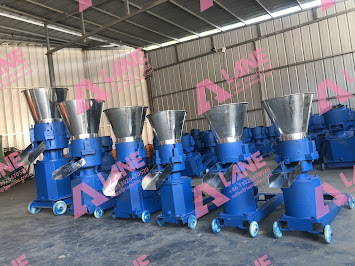How to Manufacture Fertilizer: A Guide for Compound Fertilizer Manufacturing
In modern farming fertilizer is the main source of nutrition of the plants It is the unsung hero behind the abundant harvests that feed billions. But have you ever wondered how these fertilizers are created? Most common fertilizers are compound fertilizers, Organic fertilizers and liquid fertilizers.
The question of how to manufacture fertilizer is not uncommon. This article will take you inside a compound fertilizer production line to explore the raw materials, the manufacturing process, the final products, befit of fertilizer and machinery that makes it all possible.
The Essential Raw Materials:
Compound fertilizers are primarily categorized by their NPK content. NPK stands for Nitrogen, Phosphorus, and Potassium.
The main source of nitrogen is ammonia. It is produced via the Haber-Bosch process. It is produced by combining nitrogen from the air with hydrogen from natural gas. Ammonia is the main raw material for Urea and ammonium nitrate.
The main source of Phosphorus is phosphate rock, a mined mineral. This rock is treated with sulfuric acid to produce phosphoric acid. it can be used to create compound like monoammonium phosphate (MAP) and diammonium phosphate (DAP).
The main source of Potassium is Potash. It is mined as potassium chloride. It can be used directly or with other sources.
For compound fertilizer production line, manufacturer sometimes adds additional materials including fillers, conditioners like clay or dolomite, and micronutrients like zinc, boron, and copper to create specialized, balanced blends.
The Manufacturing Process:
The raw materials can be transformed into uniform and made into fertilizer. This is a long and complex process. This process needs reliable and efficiency of industrial machinery. LANE Heavy industry is a reliable and trusted manufacture who supplied products to over 120+ country.
The process of Compound fertilizer production line is
1. Crushing and Grinding: Most of the time the raw material for the compound fertilizer contains large lumps or rock. It must be reduced to powders before using. The raw materials are supplied to the crusher by the conveyor. LANE heavy industry’s crusher and hammer mills are perfectly suited for this stage. Then with the help of dynamic batching system materials are sent to mixing
2. Mixing: raw materials are mixed in a mixing machine according to the NPK ratio. LANE heavy industry has Horizontal mixing machine which has duel ribbon. The mixer blends the powdered raw materials in precise proportions.
3. Granulation: The heart of the process is granulation. This is where powdered raw material with the help of double roller granulator formed into strong, dust-free granules.
3. Drying: The newly formed granules are too soft and has tendency to breaking. To prevent that they are sent to the dryer to dry.
4. Cooling: The hot granules then sent to the cooling. This prevents caking during storage and packaging and improves the product's physical quality。
LANE dryers and coolers are designed for maximum thermal efficiency and gentle handling to minimize granule breakage.
5. Screening: The next steps of the process is screening. The dried and cooled granules are passed over rotating screen to separate them by size. On size granular are sent to the coating machine and oversizer and small particles are sent to the crusher to crushed.
6. Coating and Packaging:The on-size particles are sent to the coating machine. where a coating drum applies supplement agents to the granules. The finished fertilizer is then conveyed to automated weighing and bagging systems
Finally, the on-spec granules are often passed through a coating drum where a light application of anti-caking or dust-reducing agents (like oil or clay) is applied.
Application Scope:
The compound fertilizer production line is a manufacturing process which allows for creation of diverse fertilizer types.
Compound Fertilizers: Also known as NPK fertilizers contains two or more primary nutrients in a single granular. (e.g., 10-20-10).
Custom Blends: Different granulated fertilizers are mixed to crate BB fertilizers for specific soil or crop. From vast cereal fields to orchards, vineyards, and horticulture almost every agricultural industry uses those fertilizers.
Benefits of Manufactured Fertilizer
The fertilizer manufactured by LANE machinery has profound benefits.
Increased Crop Yields: because of the precision of the NPK ratios the applied fertilizers can directly addresses nutrient deficiencies in soil. Which leads to significantly higher food production.
Improved Crop Quality: because the compound production line can do custom blends it can enhances attributes like protein content in grains, sugar content in fruits, and overall plant vigor by mixing different agents or raw materials.
Efficient Nutrient Delivery: the granulated fertilizers are easy store transport and can be applied through modern machinery. Reduce wastes.
The answer to the how to manufacture fertilizer is a harmonious mix of machine and materials. From mined raw minerals and gaseous ammonia to the uniform granules spread on fields is a testament to human ingenuity. It is a complex, carefully controlled industrial process that relies on heavy-duty, reliable machinery.
For more details, please feel free to contact us.
Henan Lane Heavy Industry Machinery Technology Co., Ltd.
Email: sales@lanesvc.com
Contact number: +86 13526470520
Whatsapp: +86 13526470520






评论
发表评论